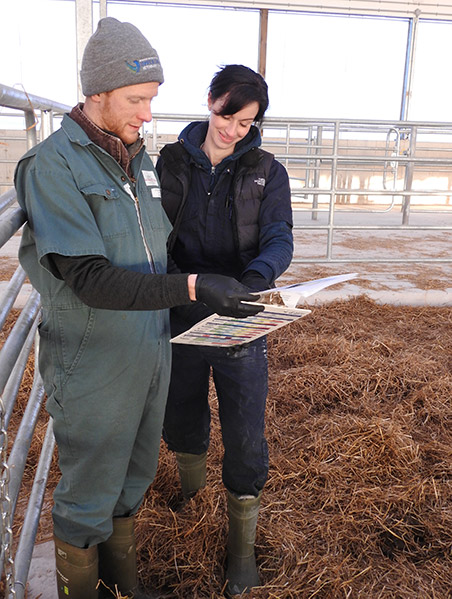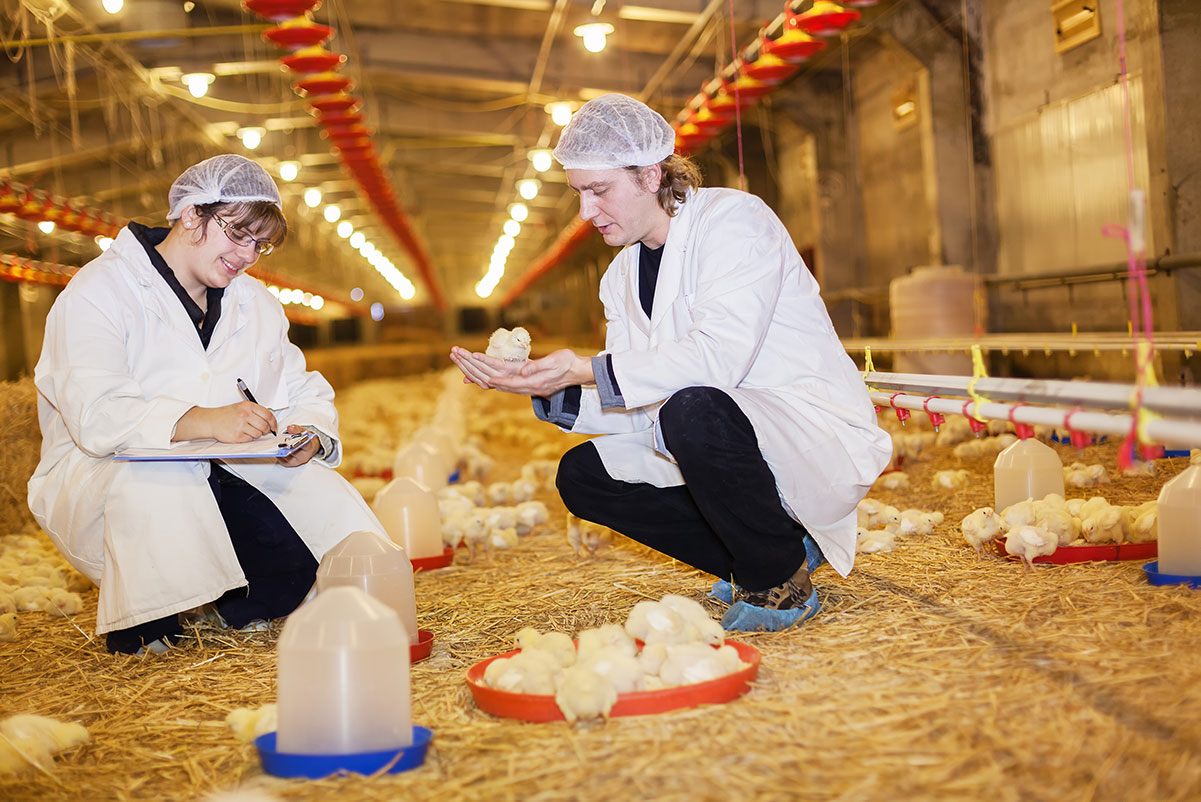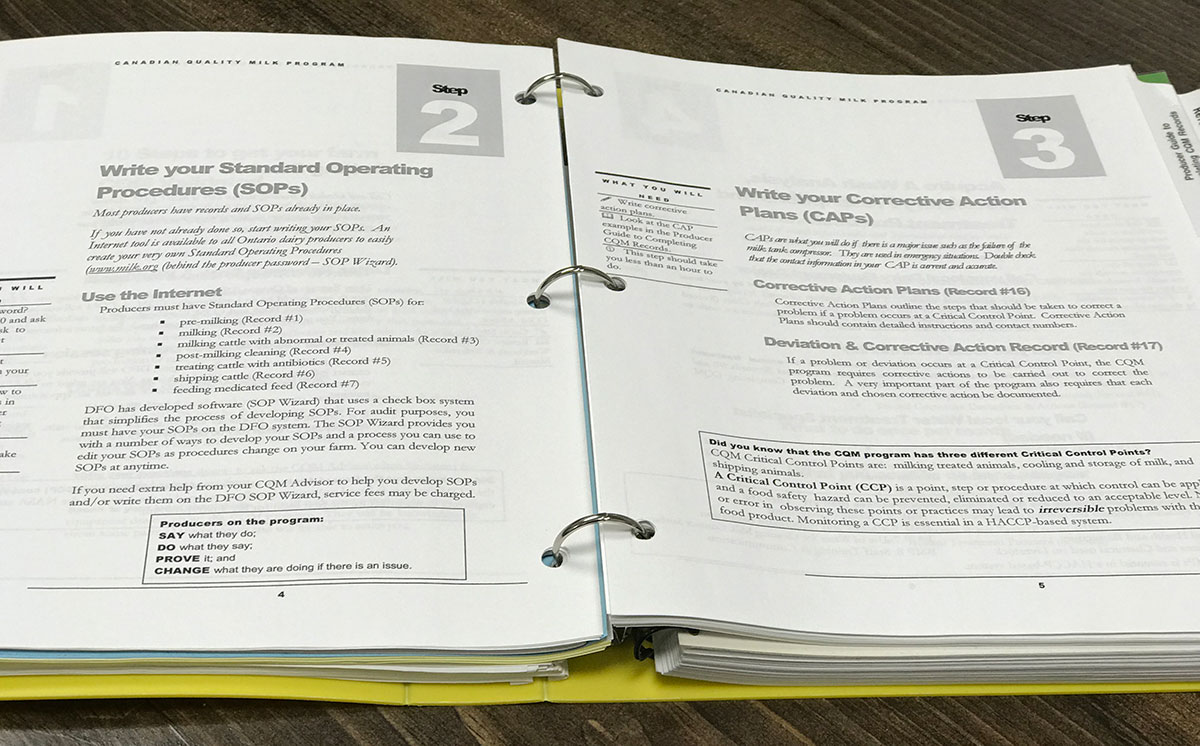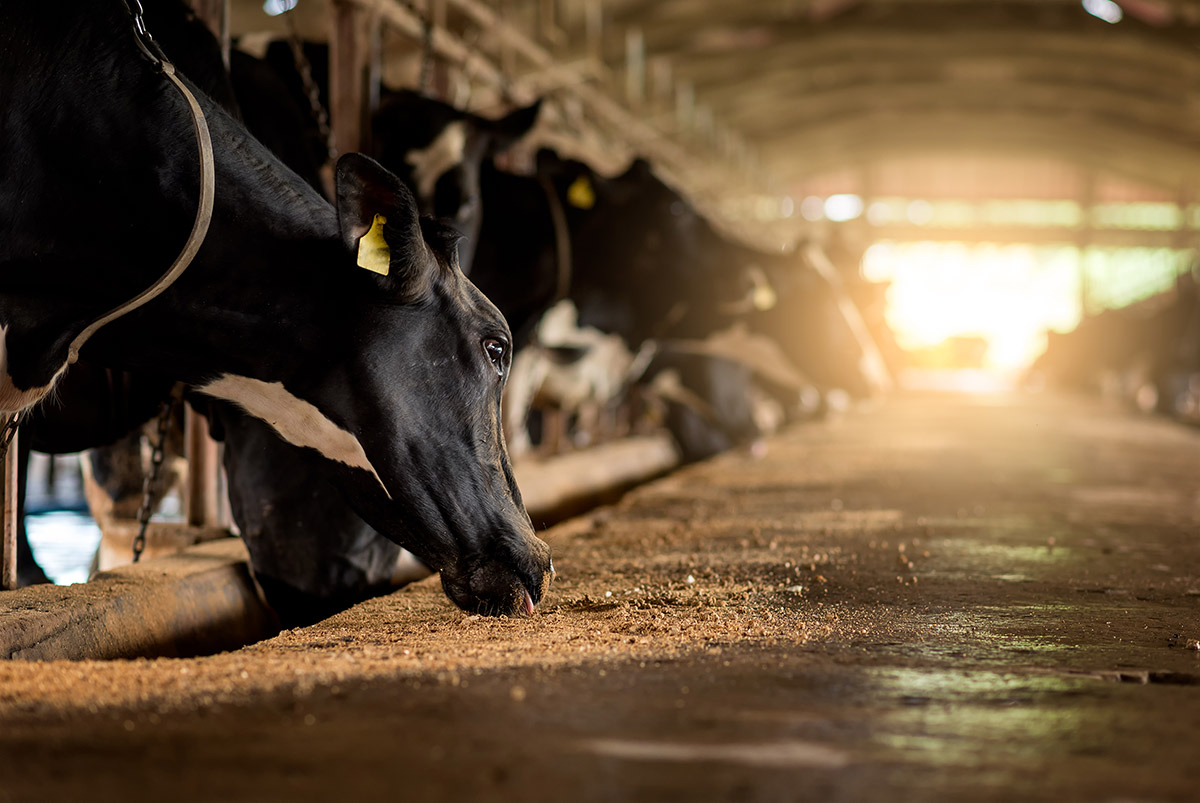Section 2 | Responsibility
Page 05 /
Developing Standard Operating Procedures
Responsibility
Every action in this world has consequences, good or bad. When deciding whether antimicrobial medications are needed, one must consider all of the consequences. It’s all about assessing the risks and rewards of using antimicrobials in each situation.
Everyone that prescribes and administers antimicrobials needs to work together to ensure that they are used in a rational, scientifically sound, and defensible manner.
It’s a team approach:
- The veterinarian is the leader and expert in animal health. They should guide decisions on antimicrobial use
- The farmers are the experts on their operation and animals. They are responsible for communicating health concerns with their veterinarian, including treatment outcomes
)
In working with a veterinarian, there are two major activities that farmers can do to ensure antimicrobials are being used in as responsible a manner as possible:
- Development of standard operating procedures (SOPs) and treatment protocols
- Maintaining excellent treatment records
This page will focus on SOPs.
Standard Operating Procedures
SOPs are written documents that describe, in a step-by-step manner, routine procedures carried out on the farm. The goal of SOPs are to ensure the consistent performance of tasks to achieve a quality outcome. They ensure that everyone involved in working on a task knows exactly how it needs to be performed.
Why are SOPs Necessary?
There are some very good reasons why SOPs are necessary:
They enable the farm to produce safe food
- SOPs for ensuring that animals are shipped after their meat withdrawal has elapsed or are milked after the milk withdrawal time has elapsed will ensure the lowest risk of drug residues reaching the food chain
They support compliance with best management practices (BMPs)
- Engaging with experts when constructing your SOPs helps align tasks with industry-accepted BMPs that are based on the best available science
They make the farm more efficient
- If expert farm advisers are involved when creating SOPs, not only are science-based SOPs created, it also makes them efficient in that task plans include only the necessary steps
They facilitate employee training
- SOPs should be detailed enough that they can serve as employee training manuals for someone who has not done certain tasks before
- When new employees read, understand, and follow SOPs, it prevents unwanted habits from being established

SOPs and Antimicrobial Stewardship
Having standardized plans of action for all of the tasks to be performed on your operation can go a long way toward fostering good antimicrobial stewardship.
SOPs support consistent application of science-based BMPs
- Remember that BMPs are developed with the health and productivity of animals in mind
- Healthier, more productive animals will need less antimicrobials
Animals crave consistency
- A reduction in stress levels will improve immune function and resistance to diseases
SOPs increase compliance and accountability for all the drugs used on a farm
SOPs facilitate the identification of sick animals, and links with appropriate, veterinary-designed treatment protocols
How to Create SOPs?
On-farm tasks vary greatly in their complexity. Naturally, some SOPs will be more complex than others. However, this does not necessarily mean that SOPs need to be lengthy. The ultimate goal when constructing SOPs is that any employee or newcomer to the farm could read the SOP and understand how the task should be performed.
Some SOPs can be made by the farm manager with little outside advice
- For example: creating an SOP for repair of paddock fencing
Other SOPs may require consultations with on-farm advisors
- For example: creating an SOP for footbaths to prevent strawberry footrot (or digital dermatitis) in your herd
Involve your staff when creating SOPs
- This will ensure that SOPs are understandable and will give “ownership” of the tasks to the workers who are to complete them

Source: ACER Consulting Ltd.
Style and Format:
You can structure your SOP documents any way you see fit:
- Some prefer list-based SOPs, (e.g. tasks listed in chronological order)
- Others may prefer to construct more visually-oriented SOPs (e.g. infographics or flow-charts)
- You may even wish to produce audio or visual files that describe the tasks to be performed
The important underlying theme is that all SOPs are developed in a clear manner that everyone working on the farm can understand.
Remember: SOPs may need to evolve. You should periodically review your SOPs for clarity, relevance to your operation, and alignment with the most recent BMPs
)
Components of the SOP:
Purpose
- Clearly stating the purpose of every SOP enables all employees that will be performing the task to fully understand the reason for the SOP
- For instance, an SOP for cows that have been treated with a drug would have a purpose statement like: “To describe the correct procedure for harvesting milk from treated cows”
Authorized personnel
- Not everyone on the operation will and should be performing all farm tasks for which there is an SOP
- It needs to be clearly stated who is responsible for:
- Routinely carrying out the procedure
- Monitoring or managing those performing the procedure
The location within the farm the procedure will be undertaken
The stepwise method for carrying out the procedure
- The description should be in chronological order
- It should be clearly described with sufficient detail so that a newcomer to the farm could understand and complete the task
- It is important that all of the steps can be reasonably complied with. For instance, requiring employees to thoroughly wash and dry their hands after milking each cow in the parlour would be an excellent way to prevent the spread of bacteria between cows; however, this would have a very low chance of compliance in modern dairy farms